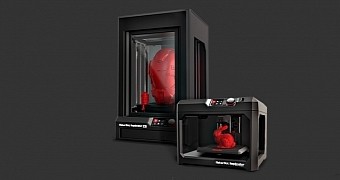Like everything else in existence, 3D printing technology can be misused, used and abused for the achievement of dishonorable or just plain desperate purposes. In the case of the recently busted crime ring from Bulgaria, however, we're quite certain it's a case of the former.
After all, organizations can't exactly be considered poor. They, by definition, have what is known as “resources” they can bring to bear for whatever they have in mind.
On that note, unlawful organizations use a certain modicum of wealth to exploit holes in legislation or to circumvent law altogether in their race to get rich.
One such unlawful organization has been using 3D printers to aid their efforts in pilfering account data from ATM machines. By extension, they have been using 3D printing technology to basically rob people.
The recently busted crime ring
Composed of 31 members, the crime ring was apprehended by Bulgarian police. Well, the ring may have been larger, but so far only 31 people have been arrested during the so-called Operation Imperium.
The operation was made possible by a previous agreement for countries of the European Union to share intelligence and coordinate efforts when it comes to crimes of this nature.
The operation saw Bulgarian and Spanish authorities cooperate with the European Cybercrime Center (EC3) to raid forty homes at the same time in three Bulgarian cities: Sofia, Silistra and Burgas. The Spanish police's role was to do something similar in Malaga, Spain.
Eight facilities were eventually discovered, where sophisticated skimming and counterfeiting equipment was being used.
Over 1,000 micro cameras, card readers, magnetic strip writers, smartphones, flash drives, personal computers and other devices were confiscated. In a similar vein, a large quantity of blank plastic cards was found as well.
Those cards could be encoded with stolen account information and used to basically empty people's bank accounts with impunity.
It wasn't just Bulgaria and Spain either. While the ring was based there (well, what was found of it anyway), ATM data was stolen from people based in Spain, Italy, France, Germany and Turkey. The forged ATM cards were then transferred to Peru and the Philippines, or other countries outside the EU.
Where 3D printing figured in all this
3D printers were being used to make fake card slot bezels. These bezels were placed on the front of ATM card slots and would allow card data to be skimmed. MakerBot Replicators were employed, to be specific. Probably not how the company hoped its machines would get publicity.

 14 DAY TRIAL //
14 DAY TRIAL //